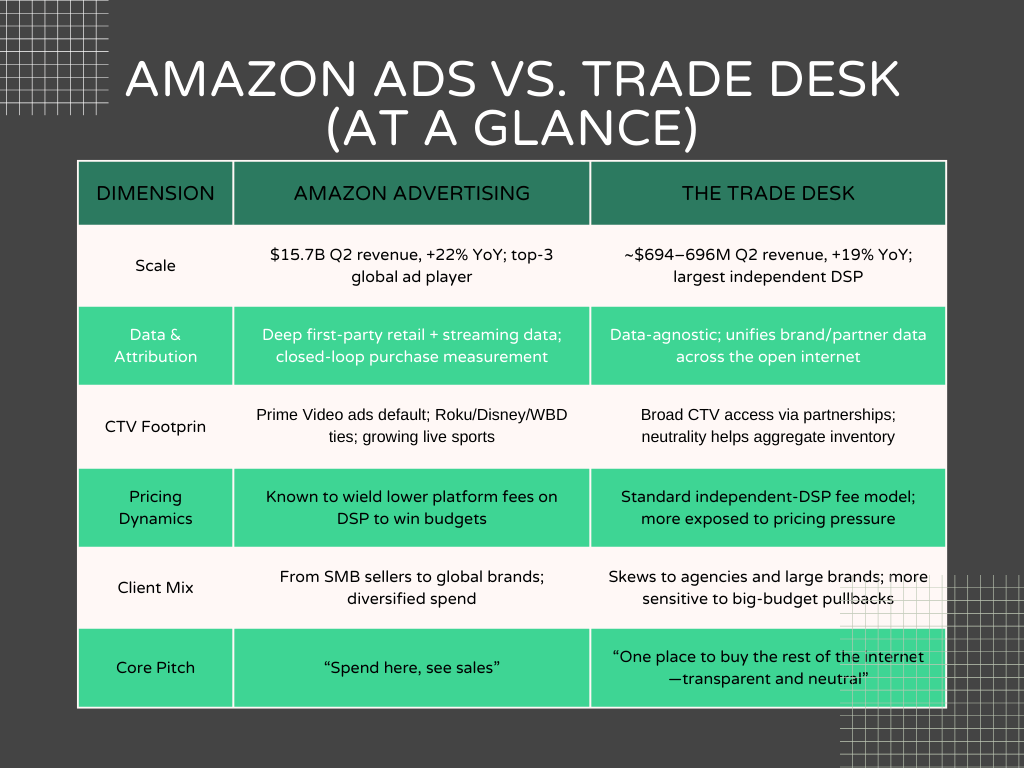The Trade Desk plunged 38% after slowing growth, soft guidance, and a surprise CFO exit rattled investor confidence, while Amazon’s booming ad business loomed large.
Sectors & Industries
Table of Contents
The Trade Desk (TTD) just had the ugliest trading day in its history, down 38% in one session, erasing $18+ billion in market value. This wasn’t a routine wobble; it was a conviction break. What spooked investors so badly? Short answer: slowing growth, a surprise CFO change, and Amazon’s surging ad machine.
Analysts piled on with fresh downgrades—flagging valuation risk and mounting competitive pressure from Amazon, particularly in connected TV (CTV). That chorus turned concern into capitulation.
Amazon’s ad business delivered $15.7B in Q2 2025—22% YoY—and it’s not just retail search anymore. Prime Video now runs ads by default, and Amazon is cutting deals across CTV (think Roku, Disney, WBD) while stacking premium live sports inventory. For marketers, Amazon’s unique edge is closed-loop attribution: show an ad, see the purchase. That’s irresistible when budgets are tight.
Meanwhile, TTD champions the open internet—the thousands of sites, apps, and streaming services outside walled gardens. It’s neutral, data-agnostic, and strong at cross-publisher reach and frequency control. But when CMOs need fast, provable ROI, spend gravitates toward platforms with first-party data and direct sales signals—i.e., Amazon (and the other giants).
Management change at the wrong time: A CFO transition amplifies every other concern.
Amazon Ads vs. The Trade Desk (at a glance)

If you’re tracking whether this was a painful reset—or a thesis break—watch these:
TTD’s 38% plunge was the product of slowing growth, cautious guidance, a CFO handoff, and a competitor with a bigger engine and better telemetry. Amazon is not just competing; it’s rewriting the rules by binding ads to purchases at staggering scale. The Trade Desk still matters—a lot—for the open internet, but it needs to prove (fast) that AI-driven buying, identity innovation, and retailer partnerships can deliver ROI clarity that keeps big brands investing outside the walled gardens.
Join LevelFields now to be the first to know about events that affect stock prices and uncover unique investment opportunities. Choose from events, view price reactions, and set event alerts with our AI-powered platform. Don't miss out on daily opportunities from 6,300 companies monitored 24/7. Act on facts, not opinions, and let LevelFields help you become a better trader.

AI scans for events proven to impact stock prices, so you don't have to.
LEARN MORE